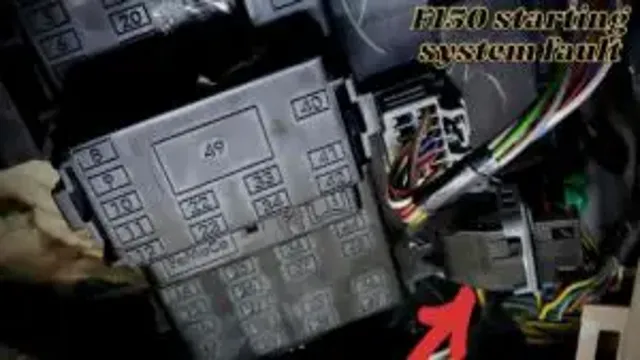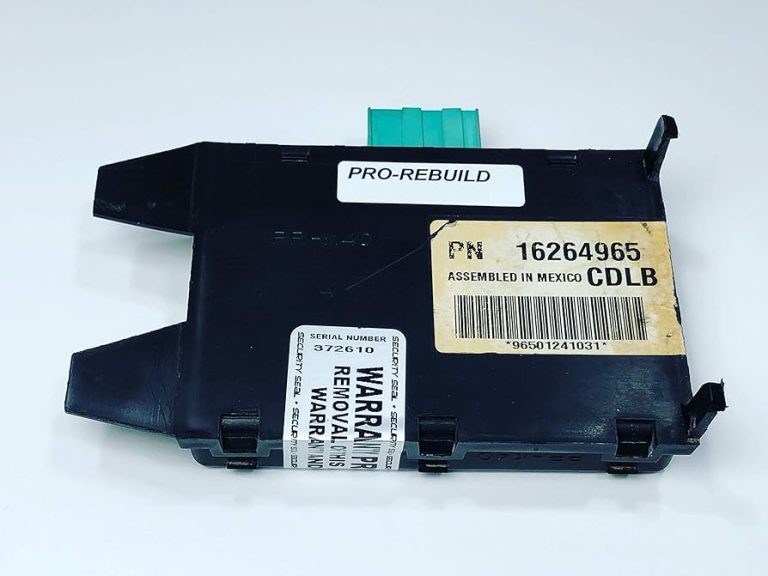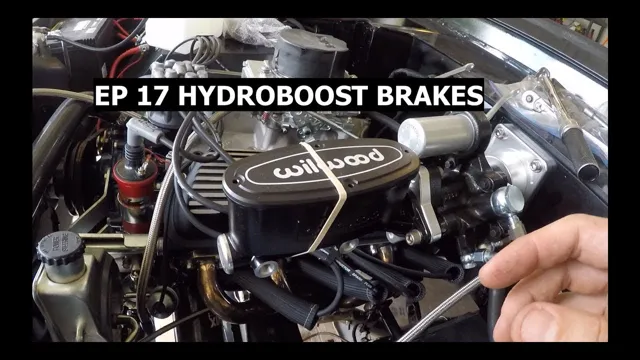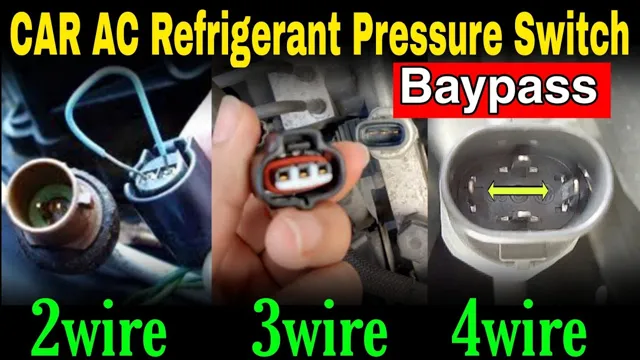Revive Your Ford F150 with These Startlingly Simple Solutions for the Starting System Fault
If you’re a Ford F150 owner, you might have encountered the starting system fault. It’s frustrating to have an issue with your vehicle that makes it difficult or impossible to start. But don’t worry, fixing this problem isn’t as complicated as you might think.
In this blog post, we’ll explore how to fix the starting system fault on a Ford F150. We’ll break down the possible reasons why this issue occurs and offer practical solutions to help you get back on the road. So, sit back, relax, and let’s dive into the world of troubleshooting Ford F150 starting system fault!
Check the battery
When your Ford F150 starts giving you the dreaded “starting system fault” message, the first thing you should check is the battery. Make sure the battery is properly connected and there is no corrosion on the terminals. If the battery is more than 4 years old or has been discharged multiple times, it may need to be replaced.
Try jump-starting the vehicle with another car or a jump-starter pack. If that works, drive the car for at least 30 minutes to recharge the battery. If the battery seems fine, check the starter motor and the alternator next.
A faulty starter motor or alternator can also cause a “starting system fault” message. With these simple steps, you can fix the starting system fault in your Ford F150 without much hassle.
Use a multimeter to test voltage
If you’re having trouble starting your vehicle, it may be because of a dead battery. To check the battery’s voltage, use a multimeter. First, make sure the car is turned off and the keys are removed from the ignition.
Then, locate the battery in the engine compartment. The multimeter has two probes, one red and one black. Turn the multimeter on and set it to DC voltage mode.
Next, touch the black probe to the negative terminal on the battery and the red probe to the positive terminal. A healthy battery should have a voltage reading of around 16 volts.
If the reading is below 12 volts, it’s likely that the battery needs to be charged or replaced. Testing the voltage of the battery can give you a good indication of its overall health, but if you’re still having problems starting the vehicle, it’s best to have it inspected by a professional mechanic.
Inspect battery terminals for corrosion or looseness
As a car owner, making sure your battery is in good condition is crucial to ensure your vehicle runs smoothly. One thing you can do to maintain your battery is to check it regularly for signs of corrosion or looseness. Battery terminals are crucial to the proper functioning of your car’s electrical system, so taking a few minutes to inspect them can save you from experiencing any unexpected issues while on the road.
Corrosion can accumulate on the terminals over time, which can prevent the battery from holding a charge or sending power to your vehicle’s electrical components. Looseness can also cause problems with the connection, causing your car to fail to start or experience other electrical issues. Checking your battery for corrosion or looseness is a simple process that can potentially save you from costly repairs down the road.
So, take a moment to pop open the hood and give your battery a quick inspection – it’s a small but essential step in keeping your car in tip-top shape!
Check starter motor
Are you experiencing a starting system fault in your Ford F150? Don’t worry – there are several potential causes for this problem, and one of them could be a faulty starter motor. The starter motor is responsible for cranking the engine and getting it running, so if it’s not working properly, your engine won’t start. To check if this is the issue, first, try turning on your headlights – if they are bright, it’s unlikely the battery is the cause.
Next, listen for any clicking sounds when you turn the key – if there’s a clicking noise but no engine turnover, the issue could be the starter motor. Additionally, you could try tapping the starter motor with a hammer to see if that improves its function. Ultimately, if you’re unsure about what’s causing the starting system fault, it may be best to take your F150 to a trusted mechanic who can diagnose and fix the issue.
By following these steps, you’ll be one step closer to getting your Ford F150 back on the road.
Listen for clicking sound or grinding noise
When trying to start your car, if you hear a clicking sound or grinding noise, that could be a sign that there’s an issue with your starter motor. Sometimes, when you turn the key, you may hear a clicking sound but the engine won’t start. This is a common sign of a faulty starter motor.
The starter motor is responsible for turning the engine over when you turn the key. If it’s not working properly, your car won’t start. It’s important to have your starter motor checked if you hear any strange noises or have trouble starting your car.
Don’t ignore these warning signs. If left unaddressed, a faulty starter motor can cause more significant damage to your car’s engine and make repairs much more expensive. So, if you hear a clicking sound or grinding noise, take it as a sign that it’s time to get your starter motor inspected.
Check the wiring connections for looseness or damage
When it comes to troubleshooting your car’s starting system, checking for loose or damaged wiring connections should be your primary go-to solution. Make sure to inspect all the wiring and cables connected to the starter motor for frayed wires, corroded terminals, or loose fittings. This can be done with the use of a simple multi-meter, but be sure to disconnect the battery before you begin.
Once you have checked and tightened any loose connections and cleared away any corrosion and debris, test the starter motor to see if it is functioning correctly. If it’s still not working, you might need to replace your starter motor. This is because a damaged or aging starter can cause strain on the wiring and connections, even if they are physically intact.
Don’t ignore the signs of starting issues such as slow cranking, grinding noises, and failure to start, as these could be an indication of a wiring problem or a problem with your starter motor. So even if you’re not a technical person, always consider connecting with a professional mechanic for a thorough diagnosis of your vehicle’s starting system, which can improve your chances of detecting any underlying issues.
Test the starter motor using a jumper cable
If you suspect that you have a faulty starter motor, a quick and easy way to test it is by using a jumper cable. To begin, make sure your vehicle is in park and the emergency brake is on. Locate the starter motor, which is typically mounted near the transmission bell housing on the engine block.
Take one end of the jumper cable and attach it firmly to the positive terminal of the battery, using the proper safety precautions. Next, locate the starter motor relay on the fuse panel and remove it. With the relay removed, expose the terminals and securely attach the other end of the jumper cable to the two metal contacts or pins that activate the starter when the relay is engaged.
If the starter motor functions properly, it should start cranking the engine. If it does not, the starter motor may need to be replaced. Remember to disconnect the jumper cables and replace the starter relay before attempting to start the engine.
Testing your starter motor this way is a simple and effective troubleshooting technique to identify any potential issues and ensure your vehicle starts smoothly.
Check ignition switch
If you’re experiencing starting system faults with your Ford F150, you may want to check your ignition switch. This small but vitally important component can sometimes malfunction, preventing your engine from turning over properly. So, how do you go about fixing this issue? The first step is to locate the ignition switch – it’s usually located on the steering column, near the base of the dashboard.
Once you’ve found it, you’ll need to inspect the wiring and connections to ensure that everything is in good condition. If you notice any frayed wires or loose connections, you may need to replace or repair them. In some cases, the ignition switch itself may need to be replaced entirely.
This can be a more challenging fix, but with the right tools and a little know-how, it is definitely possible. By taking the time to investigate your ignition switch, you can potentially save yourself a lot of headache down the road and get your Ford F150 starting up like a dream once again.
Test the switch with a multimeter
If you’re having trouble starting your car, it could be a problem with the ignition switch. One way to test this is by using a multimeter. First, locate the ignition switch.
It’s typically located on the steering column or dashboard. Once you’ve found it, turn the key to the “on” position but don’t start the car. Take your multimeter and set it to the “ohms” setting.
Place one lead on the ignition switch’s “B” terminal and the other lead on the “S” terminal. If the multimeter reads anything other than zero, then the switch is faulty and needs to be replaced. Testing your ignition switch with a multimeter can save you time and money.
Ignition switches can be expensive to replace, and if you don’t know what the problem is, you could end up spending money on unnecessary repairs. However, before you replace the ignition switch, it’s important to check other possible causes, such as a dead battery or a bad starter. Once you’ve ruled out these issues, testing the ignition switch is a quick and easy way to determine if it’s the culprit.
In conclusion, if your car is having trouble starting, don’t automatically assume the ignition switch is the problem. However, if you’ve ruled out other potential causes, such as a dead battery or bad starter, then testing the ignition switch with a multimeter is a great next step. By following the steps outlined above, you’ll be able to quickly and easily determine if the ignition switch is the cause of your car troubles.
Inspect the wiring for damage or loose connections
Inspecting the wiring for damage and loose connections is an important step in maintaining the health of your vehicle. One specific area to check is the ignition switch. The ignition switch is the component that connects the starter to the battery, allowing the engine to be started with the turn of a key.
If the switch is damaged or worn, it can cause problems with starting the engine or even result in the engine not starting at all. To check the ignition switch, start by locating it under the dashboard near the steering column. Look for any visible signs of damage such as cracks or burnt areas.
Next, try turning the key while watching the dash lights. If the lights dim or flicker, it can indicate a loose connection or worn switch. If you suspect a problem with the ignition switch, it is best to have a professional mechanic replace it.
In addition to the ignition switch, it is also important to check the wiring leading to and from it. Make sure that all connections are secure and free of corrosion. Electrical issues can be difficult to diagnose and repair, so if you are unsure about anything, it is best to seek professional help.
Taking the time to inspect the wiring and ignition switch can help prevent costly repairs down the line and ensure that your vehicle is running smoothly.
Conclusion
In conclusion, fixing a starting system fault on your Ford F150 requires a combination of technical know-how, perseverance, and a little bit of luck. But fear not, by following the proper diagnostic steps, checking key components such as the battery, starter, and alternator, and consulting reliable resources and expert guidance, you can get your truck back on the road and roaring like a lion once again. Remember, the key to success is to stay cool and collected under pressure, and to approach the task with a can-do attitude.
After all, if fixing starting system faults were easy, everyone would be driving flawless vehicles. But with a little sweat and a lot of determination, you can be the one who impresses your friends and family with your mechanical prowess. So get cracking and show that Ford F150 who’s boss!”
FAQs
What are the common causes of starting system fault in a Ford F150?
The common causes of starting system fault in a Ford F150 includes battery problems, faulty starter, ignition switch issues, and damaged cables or wires.
How can I diagnose a starting system fault in my Ford F150?
To diagnose a starting system fault in your Ford F150, you can check the battery voltage, test the starter motor, inspect the ignition switch, and inspect the cables and wires for any damage or corrosion.
How do I fix a faulty starter in my Ford F150?
To fix a faulty starter in your Ford F150, you can either repair or replace the starter depending on the extent of the damage. It is recommended to take your vehicle to a professional mechanic for this job.
Is a starting system fault covered under warranty in a Ford F150?
Yes, a starting system fault is typically covered under the manufacturer’s warranty for a new Ford F150. However, it is recommended to check with your dealer for the specific warranty details and coverage.






